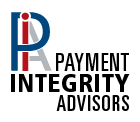Today, uncertainty for hospitals and other healthcare providers is a state of being. With operating expenses increasing and revenue decreasing, financial leaders are faced with prioritizing cost reduction initiatives. Enter cost recovery audit, a value-based service offering that is used to verify the accuracy of supplier transactions and recover funds that slip through the cracks.
Larger hospitals and networks have focused on non-labor cost reduction, targeting medical-surgical supplies and purchased services which have increased significantly during past years.
Spend management solutions, including the use of data mining to identify opportunities to purchase more effectively and efficiently, have helped increase profitability at larger providers. Investments to enhance data and provide visibility of item purchase detail, offers provides valuable insights needed to improve purchase decisions and reduce costs.
Hospitals Face Obstacles
For typical hospitals, pursuing supply chain savings is more involved, since existing technology lags that of the larger hospitals and networks. Many providers lack systems and procure-to-pay automation which drives line item purchase detail.
Additionally, legacy systems require manual processes that invite errors – reducing data accuracy which ultimately compromises the value of data analysis. Bottom line, bad data reduces the opportunity to learn and improve, thus preventing key drivers to purchase more effectively and efficiently.
The cost of upgrading – whether a system or a software solution – often creates a dilemma for organizations faced with identifying the best approach to optimize the procure-to-pay (P2P) process.
Conducting a cost benefit analysis to determine what alternatives are practical makes sense; however, many hospitals do not have the internal expertise or resources available. Hence, most rely upon third party providers who often use “industry benchmarking” to estimate the value of change, using their solution.
Meanwhile, decision-makers find themselves pondering…
 Do we fully understand how well our existing processes are working – and if not, how can we better understand?
Do we fully understand how well our existing processes are working – and if not, how can we better understand?- What is value of invoice automation (initial implementation or expanding number of suppliers)?
- How well are we tracking contract compliance and what is the associated savings opportunity?
The due diligence process for systemic upgrades can be a complex undertaking with lots of uncertainty. Perhaps that’s why so many providers opt for status quo when it comes to procure-to-pay. The complexity of change and the associated cost is often simply too much – at least for now.
Why Cost Recovery Audit?
Most healthcare providers have historically prioritized patient care, rather than back office operations. Contract complexities, internal change, limited resources and manual processes create challenges that lead to overpayments.
An independent assessment of P2P is an effective approach to measuring how well you are doing, operationally. Reviews provide many benefits, including:
- Verification of supplier transaction accuracy – via identification of problem suppliers, and the recovery of funds
- Identification of systemic or process shortcomings – helping you learn and drive change (improve processes and strengthen internal controls)
The sheer number of variables associated with the P2P process simply creates an environment that compromises transactional intent. Even for best in class operations, 100% accuracy is virtually impossible.
For Accounts Payable, reconciling exceptions (PO to Invoice mismatch) is an error prone process. Most exceptions involve inaccurate data or timing issues due to program changes. These obstacles typically require research and/or communication with other departments, suppliers or distributors.
Resolving exceptions and addressing systemic issues or data shortcomings is a costly process that is not foolproof. Research often involves phone conversations or emails that may lack clarity. Even though the intent may be good, it’s a time consuming process that invites error. Additionally, decisions are often influenced by others (i.e. suppliers). Most suppliers do a great job, but others do not.
Procure-to-Pay reviews identify transaction anomalies by creating audit trails and using data mining techniques that verify the costs negotiated are indeed received. Findings help measure how efficient and effective the existing P2P process is and creates a roadmap to improve.
For providers considering a system upgrade (or software solution), it’s an opportunity to learn how well existing systems and processes are working, and measure the value of change (benchmark).
It makes good business sense to use an outside service provider who specializes in P2P. The old adage, “you don’t know what you don’t know” is a practical approach since it creates awareness and helps answer questions that are valuable when determining the best next steps to reduce supply chain costs.
A cost recovery audit delivers value. Recoveries increase current year profitability. Awareness of “problem suppliers”, process improvement and strengthening of internal controls deliver go forward cost reduction. Additionally, the results provide insights on how well you are doing and helps measure the value of change – an appealing benefit to providers weighing the cost benefit of system upgrades or software solutions.
What do you have to lose? Let Payment Integrity Advisors help.





Leave A Comment